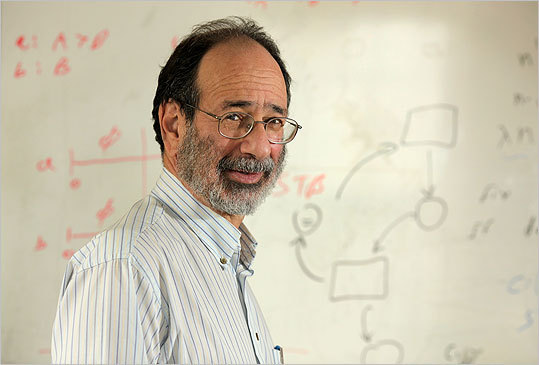
Andy McAfee and I have just released a short e-book,
Race Against the Machine. In it, we try to reconcile two important facts. 1) Technology continues to progress rapidly. In fact, the past decade has seen the fastest productivity growth since the 1960s, but 2) median wages and employment have both stagnated, leaving millions of people worse off than before. This presents a paradox: if technology and productivity are improving so much why are millions being left behind?
In the book, we document remarkable advances in digital technologies in particular. Innovations like IBM’s Watson, Google’s self-driving car, Apple’s Siri are turning science fiction into reality. Machines are doing more and more tasks that once only humans could do.
The good news is that this has radically increased the economy’s productive capacity – productivity is at record highs and increasing at an accelerating rate. The 2000s had faster productivity growth than even the booming 1990s. However, technological progress does not automatically benefit everyone in a society. In particular, incomes have become more uneven, as have employment opportunities. Recent technological advances have favored some skill groups over others, particularly “superstars” in many fields, and probably also increased the overall share of GDP accruing to capital relative to labor. While trillions of dollars of value were created between 2002 and 2007, over 60% of the increase went to the top 1%, as technology made it easier for them to leverage their talents globally.
The stagnation in median income and employment is not because of a lack of technological progress. On the contrary, the problem is that our skills and institutions have not kept up with the rapid changes in technology. In the past, as each successive wave of automation eliminated jobs in some sectors and occupations, entrepreneurs identified new opportunities where labor could be redeployed and workers learned the necessary skills to succeed. In the 19th and 20th centuries, millions of people left agriculture, but an even larger number found employment in manufacturing and services.
In the 21st century, technological change is both faster and more pervasive. While the steam engine, electric motor, and internal combustion engine were each impressive technologies, they were not subject to an ongoing level of continuous improvement anywhere near the pace seen in digital technologies. Already, computers are thousands of times more powerful than they were 30 years ago, and all evidence suggests that this pace will continue for at least another decade, and probably more. Furthermore, computers are, in some sense, the “universal machine” that has applications in almost all industries and tasks. In particular, digital technologies now perform mental tasks that had been the exclusive domain of humans in the past. General purpose computers are directly relevant not only to the 60% of the labor force involved in information processing tasks but also to more and more of the remaining 40%.
As the digital revolution marches on, each successive doubling in power will increase the number of applications where it can affect work and employment. As a result, our skills and institutions will have to improve faster to keep up lest more and more of the labor force faces technological unemployment. We need to invent more ways to race, using machines, not against them.
In the end, Andy and I are optimistic that that we can harness the benefits of accelerating innovation. But addressing the problem starts with a correct diagnosis, and that’s what our e-book sets out to provide.
Do agree with our diagnosis? What is your prescription?























